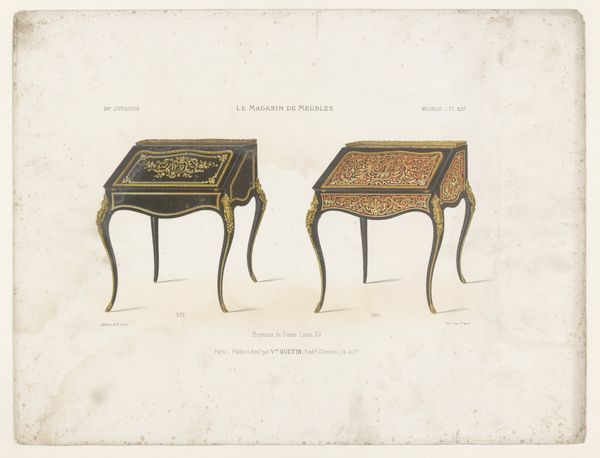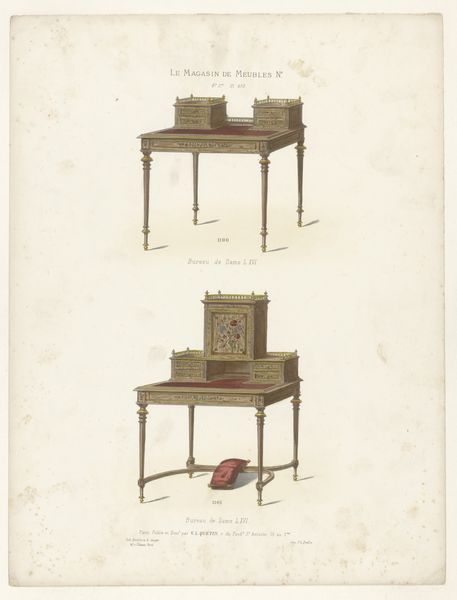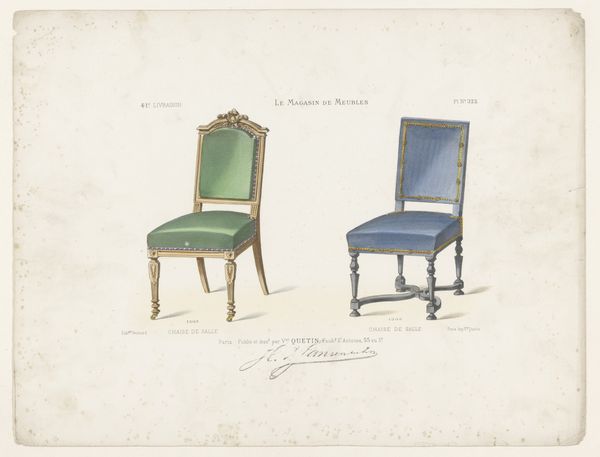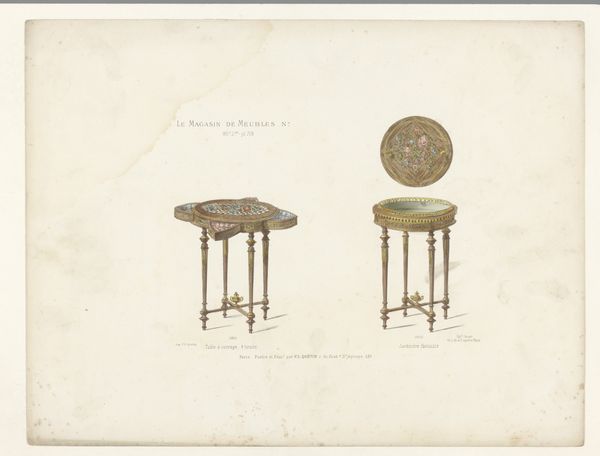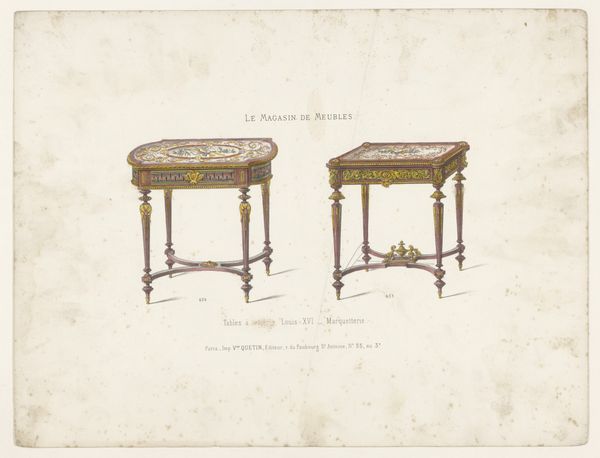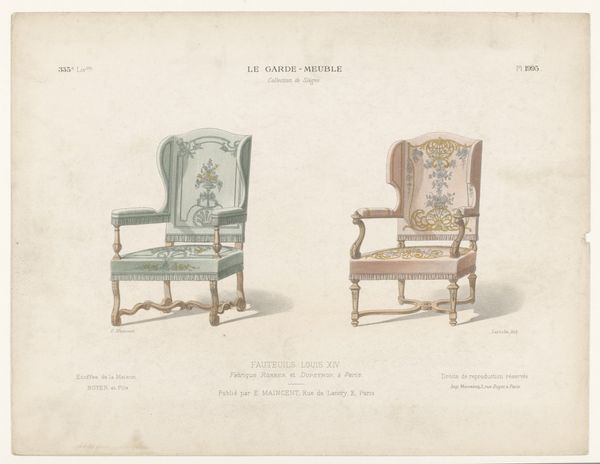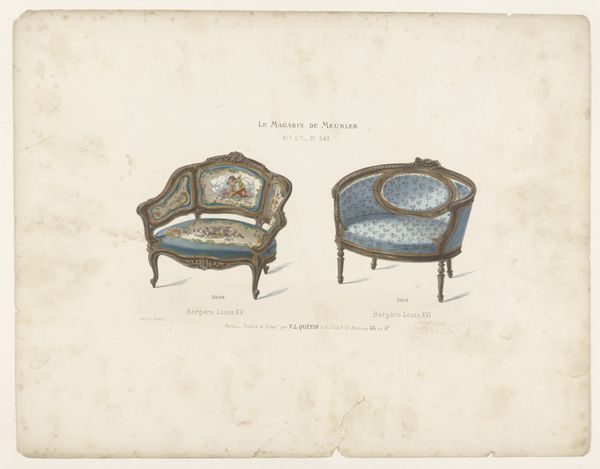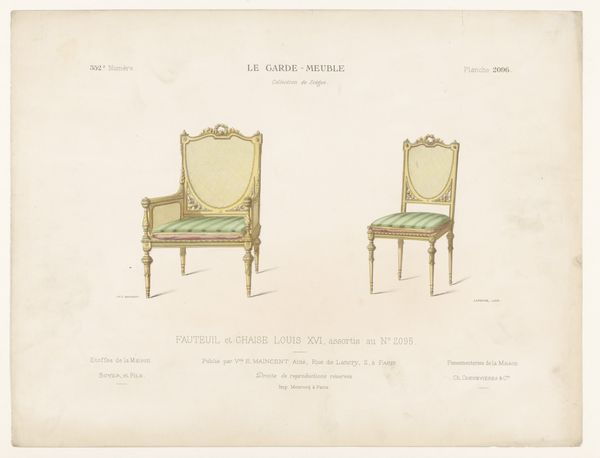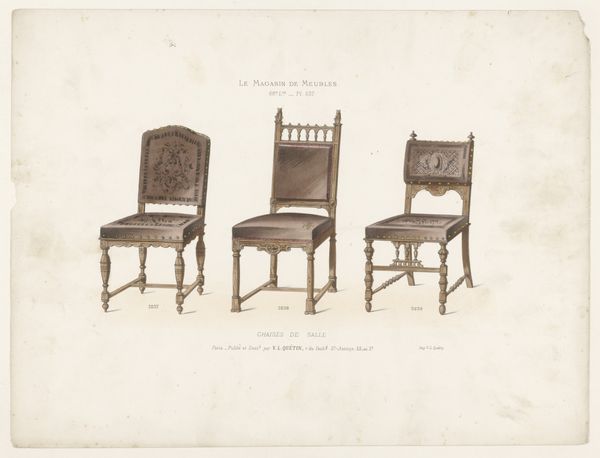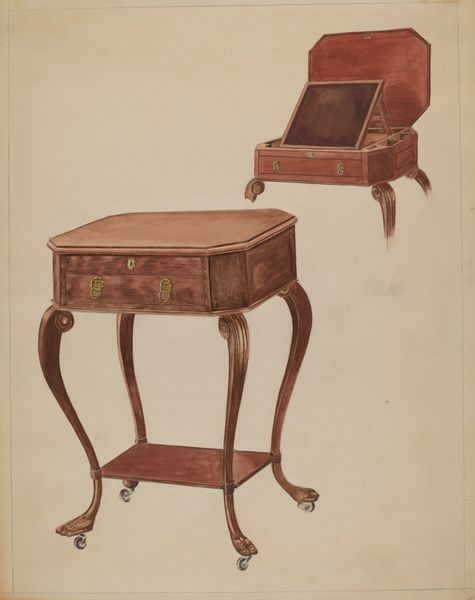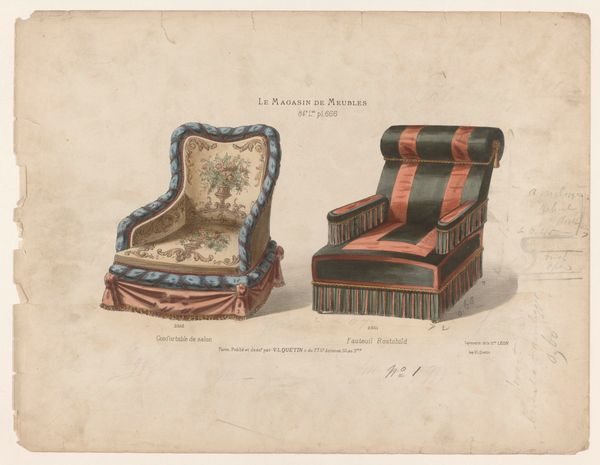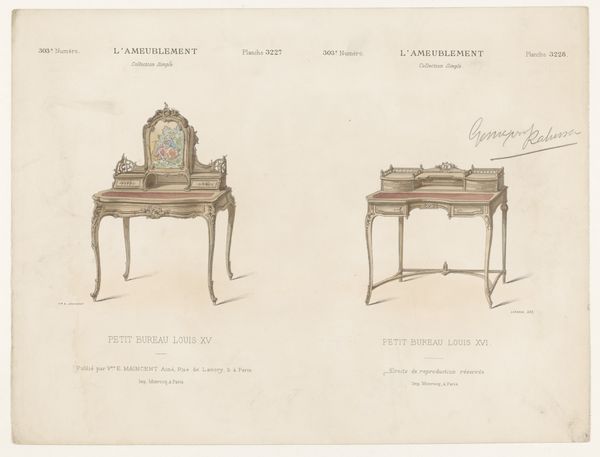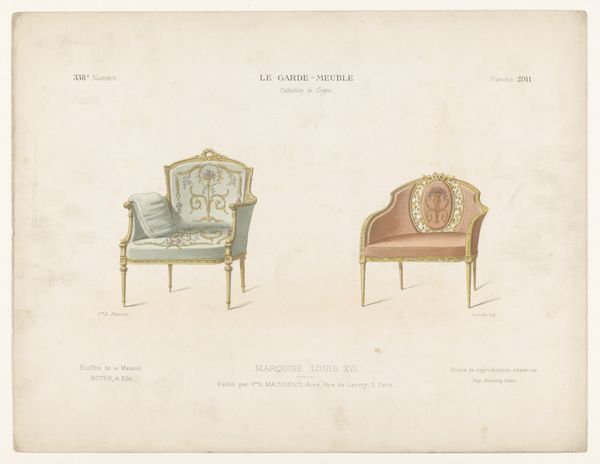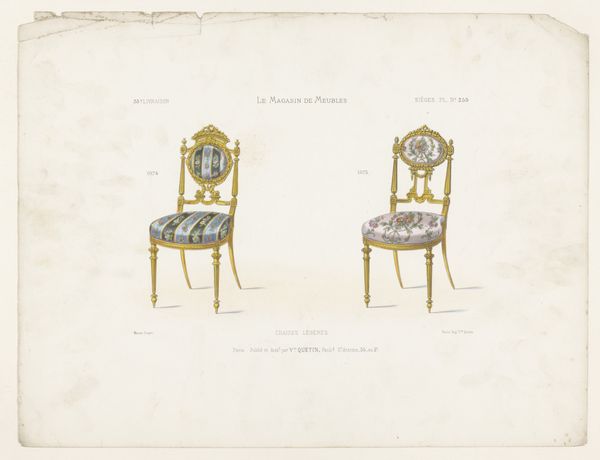
Dimensions: height 273 mm, width 360 mm
Copyright: Rijks Museum: Open Domain
Curator: Let’s explore "Twee speeltafels," which roughly translates to "Two Gaming Tables." Created sometime between 1832 and 1877, it presents a watercolor and pencil print by an anonymous artist. Editor: Immediately, I’m struck by the delicacy of these renderings. The aged paper enhances that feeling, as if they are whispers from another era, hinting at privilege and leisurely pursuits, wouldn't you agree? Curator: Absolutely, I would suggest it showcases more than simply privilege, it reflects particular skill sets used in producing items intended to facilitate social pastimes. Focusing on its material qualities, note the meticulous rendering of the wood grain, the brass inlays, and what seems like felt surfaces under the glass tops of each table. The act of representation itself underscores the value placed on skilled artisanship, both in furniture production and image reproduction. Editor: And yet, there’s also a very constructed idea of femininity in play here. Imagine the kind of person using these objects—the social constraints, the expected performativity. The tables become these sites where gendered expectations meet material culture, informing identities and creating these gendered interactions and class boundaries. Curator: That’s insightful. Also, if you think of the location that is advertised on this artwork, "Le Magasin de Meubles", this indicates the rising trends of consumerism among the upper class during this period. This artwork presents us with another material source of capitalism to dive into, exploring what "commodities" meant during that time period. Editor: Indeed, there’s a clear performative aspect. Each table is almost like a stage set for a specific kind of engagement, these social niceties that were reserved for certain classes and genders in Europe during this time. Curator: A perfect intersection of art, craftsmanship, capitalism, and social display, don’t you agree? It really is a layered, if not deliberately so, piece to deconstruct. Editor: It is fascinating how a simple drawing of furniture opens into broader reflections on our material past, what society and class looked like, and perhaps the artificiality of these interactions, these objects remind us of an unequal and classist past that must not be ignored. Curator: Well, it does allow us to question who had the time for these amusements, and what systems had to be in place for it all to function so...elegantly. Editor: Elegantly and superficially, it also reminds us to examine not only these objects but how these social differences perpetuate today.
Comments
No comments
Be the first to comment and join the conversation on the ultimate creative platform.
